
Mulch is what covers the soil. Compost goes in the soil and feeds it.
According to Texas A&M University, a well-mulched garden can yield 50% more vegetables than an unmulched garden space! Mulching brings soil organisms to enrich the top of your soil, where the plant’s feeder roots are! And, oh, yay, prevents light germinating hungry weed seeds from sprouting! Less time weeding! Healthy soil suppresses diseases! In addition to that, mulching cools your soil, keeps plant roots functioning optimally when it’s hot, keeps moisture in. Even only a two-to-four inch layer of mulch decreases evaporation from the soil by 70 percent or more! Water well before applying your mulch, or you will insulate dry soil rather than moist soil. Mulch prevents erosion, keeps your crop clean above the soil and above the soil predator zone, and in the long-term, if biodegradable, feeds your soil! Gardeners.com says ‘University field tests have shown that mulch can increase (or decrease) yields by as much as 30 percent.’ Either way, 30% or 50% on the plus side is a significant amount!
I used to be a total indiscriminate mulcher, covered my whole veggie garden. I’ve adjusted my coastal SoCal mulch thinking to match the plant and the season! Here are important considerations about mulching that make a difference!
If you are north or at high elevation mountainous terrain, you mulch in winter and maybe summer depending on how hot things are where you live. In cold, cold winters, you use mulch like a blanket to keep the soil as warm as possible, maybe prevent it from freezing, extend your season, keep plants from freezing. And maybe it will all freeze anyway!
In SoCal, south, in our ‘winter’ rainy season, pull mulch away to let the sun warm the soil, reduce moist slug and snail habitat, let soil dry so fungi die, to remove pest habitat. Gardeners generally start mulching late April, May, in summer for sure, unless you are super coastal cool, or your garden is shaded. Then you mulch a little later, if at all. Mulching for us is to keep the soil cooler, keep it moist/use less water, keep roots from burning or drying out, reduce weeds.
The first plant you mulch in spring, well before May, is any Brassica – broccoli, kale – that you will be over summering. Brassicas like cool soil, so pile your mulch on good and deep, 4 to 6″! Sweet Peppers are quite the reverse, the last plants you mulch. They like soil temps above 65. Mulch keeps the soil cooler, so use your soil thermometer to see if your soil is up to that happy 65 yet. Mulch may be too cooling for your peppers, slowing their growth.
Beans and plants that have short roots that need to stay moist, you mulch. Strawberries get big pretty quickly and self mulch pretty soon though you could mulch them just enough to keep the berries clean and above the ground level predator zone. Chard likes moist and much cooler, so mulch. Zucchini, doesn’t care. They are a huge leaved plant, greedy sun lovers, that are self mulching.
Special mulch rules for Tomatoes and Cucumbers! If your garden has the blights or wilts, use an open mulch like loose straw only 1″ deep to allow airflow. You want light and air circulation, for the soil to warm and dry some. Washington State Extension says: Straw mulch can help reduce cucumber beetle problems in at least 3 different ways! See more!
Some like it HOT! Fact is, some veggies/fruits do better with no mulch at all! If you are coastal SoCal, in the marine layer zone, your mulch, or composting in place, may be slowing things down a lot more than you realize. The biggest most abundant melons I’ve ever seen grown at cool & coastal Pilgrim Terrace Community Garden were on bare hot dry soil in a plot that had a lower soil level than most of the other plots. The perimeter boards diverted any wind right over the top of the area, the soil got hot! It was like an oven! So, let it be bare! No mulch under melons, your winter squash, pumpkins except under the fruits to keep them off the ground up from insect predators, clean. Winter squash needs a full hot season to get their full growth and develop that protective hard shell.
With these huge vines it is a good water saving practice to plant them in basins like the Zuni desert waffle gardens technique. You don’t need to make berms, just dig a basin lower than the surrounding soil. Plant, water well, then top the basin only with substantial mulch! All the water you deliver goes to your plant’s roots, less moisture is lost to evaporative wind that goes across the top of the basin, less water is needed less often. Moisture seeps to the lowest level and that area stays more moist.
Make your basin big enough to accommodate feeder roots to the drip line of the main area of the roots. Save more water by putting a tall stake at the center of the basin so you can see where to water when the leaves get big and cover the area! Water the roots only; don’t water the rest of the area that doesn’t need it and that watering would cool the plant and ground.
The big vines need plenty of water to support quick vine growth in early summer! The rule of thumb is a minimum of 1-inch of water a week, 2 inches is likely better. Raised beds and some containers also need more water since the beds are hotter. Mulch them generously since that is where the roots are. Lots of water leaches the soil nutrients away, so you will need to feed, sidedress, those plants during the season.
Let jicama get hot! Eggplant is a Mediterranean heat lover, does well in the desert! Okra is full sun Southern hot happy plant!
Mulch can be many different materials as you can see in the image above. Keep them an inch away from your plant’s stem to avoid rot and fungal problems. Be garden smart! When possible, use an organic degradable mulch that feeds your soil too!
Biodegradable, soil building!
- Straw is one of the simplest, fastest, easiest to use, readily available – some feed stores will let you sweep it up for free! It allows air circulation, water to get through. Apply 4″ deep or more, enough to keep the light from getting through to light germinating weed seeds, or if you want your soil to stay quite cool and damp underneath. Be sure it is the seed free kind!!!
1″ Deep is good where you want no splash, like on lettuce, or to avoid soil splash on fungi susceptible leaves of tomatoes and cucumbers. Straw is the best choice for them because it allows air to circulate, letting the soil dry and the fungi die! For cucumbers, research shows straw might slow cucumber beetle movement from one plant to another! Plus, it is great shelter for wolf spiders, daddy long legs and other predators, helping predator conservation. The more spidies, the healthier your garden! More about successfully growing Tomatoes!
It’s important to remove, throw away, not compost, tired mulch from under disease susceptible plants like tomatoes and cucumbers, then replace with fresh uninfected straw. Keeping it moist creates habitat the fungi do well in. If you keep forgetting to replace it, just remove it entirely and let that soil dry. As best you can, remove any soil-touching drooping leaves like religion!
- Grass clippings need to be dried before use so they don’t form an impervious slimy mat. Spread them out, run a rake through them a few times. 24 hours and you’re in business. Once they are brown, the Nitrogen is gone, so they are no longer food, just mulch. Be sure no herbicides have been used on the grass.
- Pine needles, deep downed leaves gathered after a windstorm. Use only leaves that have been aged at least nine months. This allows the growth-inhibiting phenols to be leached out. Run over the leaves with a mower or stomp them in a bag to break them down so they will be at soil level, available to the soil, and not blow away. See more! Know that pine needles can make your soil acidic over time.
- A thick layer of compost is often used as mulch though when it is used it is usually covered with straw to keep it from totally drying out, off gassing Nitrogen, nutrients lost. Why waste any of it? Dig it into the soil. It has excellent water holding capacity.
- Simple chop and drop! As you are gardening, have your clippers handy to cut up discarded disease and seed and pest free green waste. It can be mulch, or pull back your mulch, chop in your stuff, pull your mulch back over to cover it. If you have time, use your spade fork to put holes in the soil. Insert the fork, rock it back and forth a bit. Spread very well-aged manures. Cover with your chop and drop to compost in place. It acts as mulch while they decompose. When you water, it’s like compost or manure tea to the ground underneath. If you don’t like the look of that, cover it with some pretty purchased undyed mulch you like. Let it feed your soil.
- LIVING MULCH, SELF MULCHING is triple productive! It mulches, provides companion plant advantages, and is a crop all at the same time! Closely planted beets, carrots, garden purslane – a halophyte, radish, strawberries, turnips act as living mulch to themselves and when used as an understory they are living mulch for the bigger plants too! The dense canopy their leaves make lets little light in, keeps things moist. Thin them out as they get larger. Eat the tasty tinys! Put plants like these, on the sunny side, around the bases of larger plants – even some lettuces don’t mind the heat! Two crops from the same space!
- Living Mulch Legume soil feeding understory! Aka cover crop, green manure! Fling a legume seed mix, treated with their right inoculant, about under your taller plants, peppers, eggplant, broccoli, kale and let it grow. As some of the plants die, the Nitrogen in the nodules they form on their roots become available to your soil. At the end of the season, cut the plants down and leave them on the ground as mulch. For 2-3 weeks, let the roots in the ground release the Nitrogen after the plants die. You can turn it under for a super feed – add some manure if you wish, but not much is needed. OR, you can clear spots to plant more large plants of the next season! Just slice in a hole through the legume roots, pop in your plant and you’re off! FREE except for the cost of the seeds and inoculant! In SoCal White Clover is a good choice under summer plants. Be sure to plant companion plants that help your plants before you plant the plant you want to be helped. Add the Clover to fill in; it grows quickly and isn’t too tall.
- Sawdust, Shavings, Wood bark/chips from disease and pesticide free trees. Ask a trustworthy arborist to deliver chips only from healthy trees. Specify the size of chips you want. They save dump fees. If you are growing organically avoid dyed materials. Generally chips, especially large chips, and bark, called perpetual mulches, are used for pathways rather than on veggie beds.What you don’t see in the image at top is large bark chips. Yes, larger pieces decompose more slowly, and use up Nitrogen as they decompose. This is not so good in a veggie garden since that decomp uses the Nitrogen veggies need. Same problem when we do continuous sheet composting/lasagna gardening. The process takes N from the soil; our plants may not thrive the first year or so until a soil base is established unless you add a good bit of compost and manure in your basins and planting holes. If you are using chips from your local arborist, know that oaks have tannins, and eucalyptus and tea trees have aromatic oils that inhibit plant growth. Be careful how you use those chips, even in your landscaping, especially if you want to introduce veggies among your ornamentals. Check to see what is in bagged commercial mulches, how they have been processed and if they are dyed.Redwood fiber is acidic, good for shade plants, but you need acidic compost IN the soil for acid loving vegetable plants like celery and beans. Please use redwood fiber as a last resort. Please save our beautiful trees. They take a long time to grow.
- If you are using found manures as mulch, check if animals have been fed hormones, eat pesticide sprayed hays, or pesticides have been sprayed on the manures to reduce flies. It is much safer to get nursery bought bagged manures from a reputable nursery and a reputable brand.
- Cardboard or simple overlapped sheets of newspaper…about 6 will do the job of suppressing light germinating seeds.
 Untreated Boards as mulch! Your strawberries like slightly acidic soil, and acidic mulch – redwood or pine needles. Also, you can lay down boards between mini rows of strawberries to keep the soil moist under the boards, the soil between the rows that the berry roots have access to. It’s a variation on pallet gardening. The advantages of using boards are you can space or remove your boards so you can easily access the soil to weed or add amendments, you can add or remove boards to make a bigger or smaller patch, you can make the boards the length you need or want, space them as needed per the plant. Planting between boards can be used for lots of other plants too if you won’t be planting an understory! As for your strawberries, they leaf out and get bigger, and in addition to the boards, they quickly become living mulch for themselves!
Untreated Boards as mulch! Your strawberries like slightly acidic soil, and acidic mulch – redwood or pine needles. Also, you can lay down boards between mini rows of strawberries to keep the soil moist under the boards, the soil between the rows that the berry roots have access to. It’s a variation on pallet gardening. The advantages of using boards are you can space or remove your boards so you can easily access the soil to weed or add amendments, you can add or remove boards to make a bigger or smaller patch, you can make the boards the length you need or want, space them as needed per the plant. Planting between boards can be used for lots of other plants too if you won’t be planting an understory! As for your strawberries, they leaf out and get bigger, and in addition to the boards, they quickly become living mulch for themselves!- Grow your own organic mulch! Comfrey is a great choice! It has abundant large leaves, and you can spread them about by your tomatoes and peppers. Chop and drop covered with another kind of mulch lets more of the comfrey goodness to permeate your soil. Comfrey has lovely blue flowers for pollinators, other beneficial insects, and hummingbirds. It’s best use, however, is as a compost nutrient and speeder upper! Turn in a few chopped leaves!
Not Biodegradable but still good!
- Gravel, Rocks of a size and color that pleases you, though this would be easier to use for permanent landscaping rather than veggies that change seasonally. But if it’s all you have…it works. If you live in a windy or desert area, your garden is on a slope, rocks might be best. Rocks were used in Zuni, Hopi and Navajo waffle gardens.
- Plastic. It works, a lot of commercial growers use it, but it doesn’t feed your soil. There are reasons to use different colors for specific crops, ie red works best with tomatoes! In an urban yard garden there might not be enough of that crop to warrant its use. You must put in a drip system underneath it; rainwater can’t get into the soil. It might work best in a windy area, on a hillside, where other mulch would be blown or washed away. Be careful with it because it is also used in the solarization process to heat the soil to kill weeds, read also the roots of your plants. The biggest negative is it also kills beneficial soil organisms like worms. If it works for your situation, secure it with garden staples.
Other than rocks, too much mulch would be hard to do. Too little doesn’t do the job. Replenish thinning late summer mulch. Deep mulch really protects the soil and brings soil organisms to the surface where the mulch layer meets the earth. Worms thrive in moist cool soil. Deep mulch feeds the soil and decomposes within the pile too.
If you are going to mulch, do it justice. Put on 4 to 6 inches minimum. Less than that may be cheaper and pretty, but simply makes great habitat for those little grass and weed seeds! Mulch makes moist soil, where a rich multitude of soil organisms can thrive, including great fat vigorous earthworms if you keep your soil consistently moist enough! You see them, you know your soil is well aerated, doing great!
COMPOSTING IN PLACE! One of the nifty tricks of using deeply mulched areas is to build soil right where you need it! Tuck kitchen waste out of sight under your mulch, where you will plant next or simply to feed the soil there! Sprinkle with a little healthy soil if you have some to spare. That inoculates your pile with soil organisms; pour on some compost tea to add some more! Throw on some red wriggler surface feeder worms. Grow yarrow or Russian comfrey (Syphytum x uplandicum) for leaves to put down first, then add your kitchen stuff. Comfrey speeds decomposition. What you put under your mulch will compost quickly, no smells, feeds your soil excellently! If you keep doing it in one place, a nice raised bed will be built there with little effort!
 Deepest mulch can act like a compost pile that heats up. It can extend your growing season. By installing it early you may be able to plant earlier. You don’t have to wait to plant! Just make an opening, add finished compost, amendments of your choice, and plant! There are two schools of thinking about fall mulch. 1) As fall cools, mulch keeps the soil insulated, warmer longer, extending your fall growing as well! 2) Or, late summer, as cooling starts, you may find removing mulch is better so the soil is again warmed by the Sun. Get out your soil thermometer and test it for yourself.
Deepest mulch can act like a compost pile that heats up. It can extend your growing season. By installing it early you may be able to plant earlier. You don’t have to wait to plant! Just make an opening, add finished compost, amendments of your choice, and plant! There are two schools of thinking about fall mulch. 1) As fall cools, mulch keeps the soil insulated, warmer longer, extending your fall growing as well! 2) Or, late summer, as cooling starts, you may find removing mulch is better so the soil is again warmed by the Sun. Get out your soil thermometer and test it for yourself.
Mulching is double good on slopes and hillsides. Make your rock lined water-slowing ‘S’ terrace walk ways snaking along down the hillside. Cover your berms well and deeply to prevent erosion and to hold moisture when there are drying winds. Use a mulch that won’t blow away or be sure to cover or anchor it in windy areas – plastic or netting, rebar, remesh. Biodegradable anchor stakes and ‘extra tall’ stakes are available. Carolyn Csanyi has some clever ideas on how to keep your mulch on a slope. Plant fruit trees, your veggies on the sunny side under them, on the uphill side of your berms. Make your terrace wide enough so you don’t degrade the berms by walking on them when you harvest.
Keep your Mulch topped! Cover bare spots and replenish where your mulch is getting thin. 4 -6″ is a good depth. Preferably use light colored mulches, like straw, that reflect the sunlight. If your mulch has meshed into a tight layer, use a watering spike so water gets to the roots of your plants or make holes with your spade fork. Insert it, rock it back and forth, water. Straw, rather than a meshing mulch, is better for your veggies.
Remove, bag and trash mulch where plants have had pests or disease; replace with clean mulch. Do NOT compost it or put it in green waste for city pickup. In general, remove overwintering pest habitat – old straw, weeds and piles of debris.
Any organic mulch will decompose. It really becomes sheet composting or composting in place! An 18″ deep pile becomes about 9″ high in 3 days to a week depending on temps, how moist it is, what kinds and sizes of pieces are used! Such a grand deep pile of mulch can easily become a super nutritious raised bed!
A variation of that is to first plant green manure, a legume and oat mix, let it grow, cut it down at first bloom, chop into pieces, let it sit on top 3 weeks, turn under with other amendments you want, then cover that with deep mulch and let it be. If you have them, add some surface feeding worms, red wigglers. Your soil is fed, soil organisms are enriching it, excellent soil structure is being created. In a warm SoCal ‘winter’ you can do this anytime. The whole process can take 3.5 months depending on which plants you choose to grow. See more!
End of Season
Soil resting and restoration! At the end of summer, depending on the type of materials you used, and if your soil has no disease fungi, the mulch was not under a plant that had pest infestations or disease, you can rest and feed that area of your soil by simply turning your old mulch in. Cover that area with a good deep layer of new mulch, or put on layers of materials and compost in place! Let the soil organisms party out. Leave it alone until your next planting time. It will become living vigorous nutritious soil!
It there have been pests or disease, trash that mulch, literally. Again, Do NOT compost it or put it in green waste for city pickup. In general, remove overwintering pest habitat – old straw, weeds and piles of debris.
So, you see, there are times to mulch and times not to mulch. Using less saves money, saves work. Using it well gives you a better crop!
Mulch is magic when done right! Enjoy that 30 to 50% increased yield!
Updated 4.27.23
Love your Mother! Plant bird & bee food! Think grey water! Grow organic! Bless you for being such a wonderful Earth Steward!
The Green Bean Connection started as correspondence for the Santa Barbara CA USA Pilgrim Terrace Community Garden. Both of Santa Barbara City’s remaining community gardens are very coastal. During late spring/summer we are often in a fog belt/marine layer most years, locally referred to as the May grays, June glooms and August fogusts. Keep that in mind compared to the microclimate niche where your veggie garden is. Bless you for being such a wonderful Earth Steward!


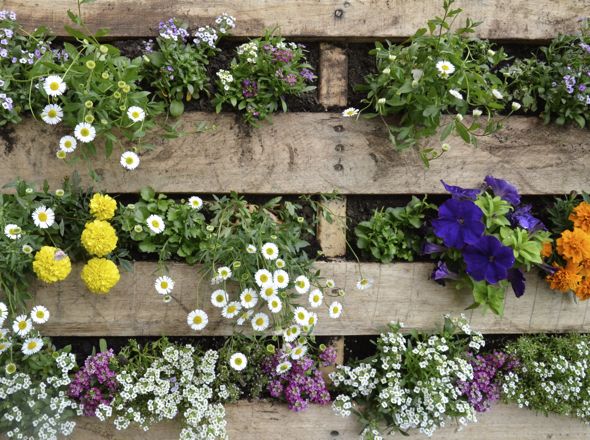
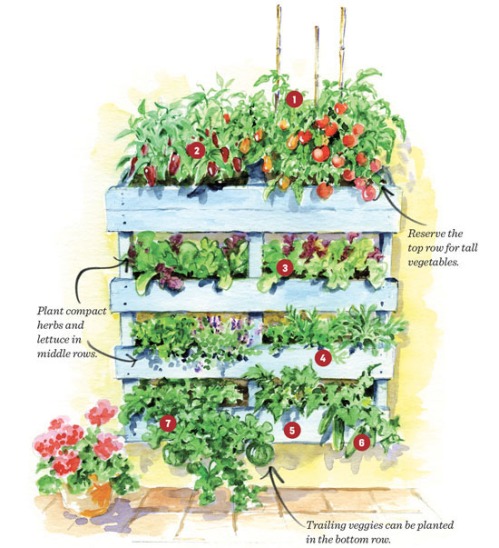

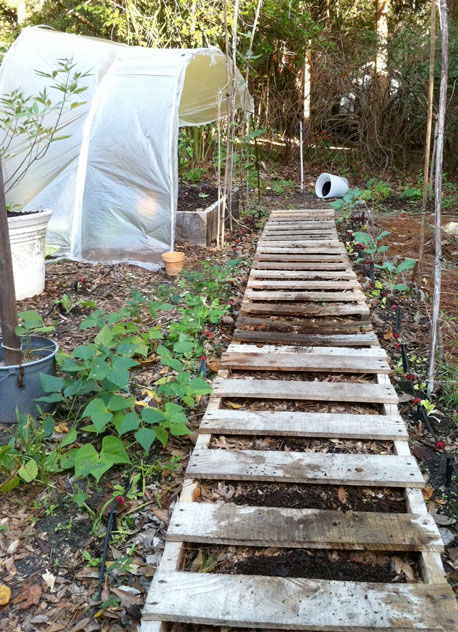
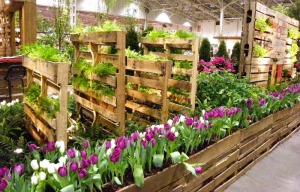
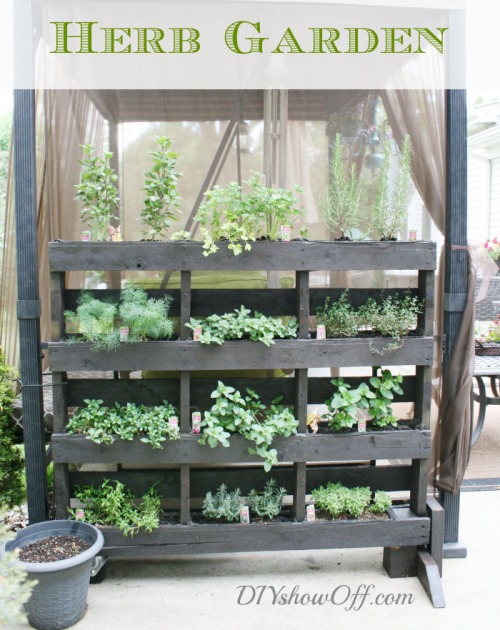
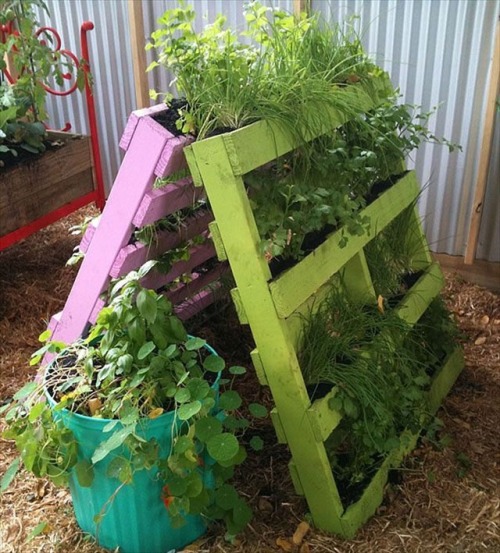
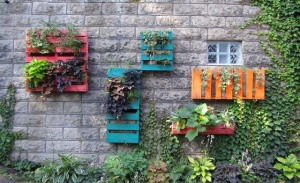
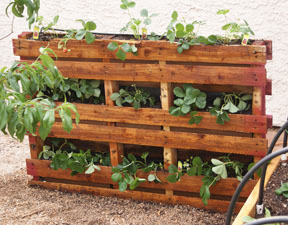
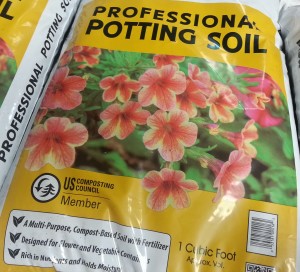
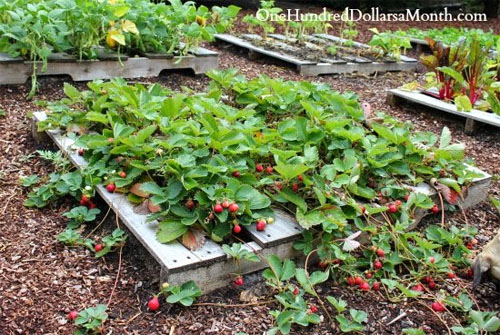
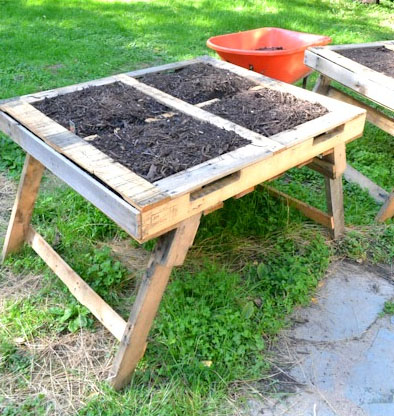
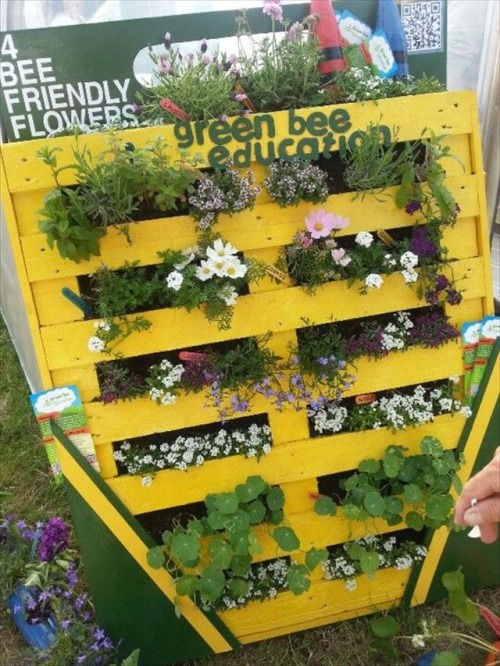


 Boards as mulch! Your strawberries like slightly acidic soil, and acidic mulch – redwood or pine needles. Also, you can lay down boards between mini rows of strawberries to keep the soil moist under the boards, the soil between the rows that the berry roots have access to. It’s a variation on
Boards as mulch! Your strawberries like slightly acidic soil, and acidic mulch – redwood or pine needles. Also, you can lay down boards between mini rows of strawberries to keep the soil moist under the boards, the soil between the rows that the berry roots have access to. It’s a variation on 
